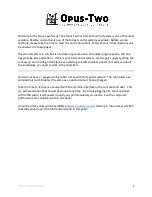
17
C
ONNECTING VIA AN
E
THERNET
C
ABLE
Connect one end of the Ethernet cable into the Power Patrol and the other end into your computer. To
begin communicating via an Ethernet cable you must first set it with HeadStart software. See
Ethernet
(TCP/IP) Connection
in the
Communicating with a Power Patrol Meter
section.
Powering the Power Patrol
Meter
The Power Patrol meter can be powered through USB cable and computer prior to field installation for
configuration purposes.
For field installation, connect the Power Patrol meter
14
AWG THHN Minimum 600VAC rating
(or equivalent in
order to maintain 600VAC safety rating of the device)
voltage leads as close as possible to a building-installed,
dedicated circuit disconnect breaker. Mark the breaker
as the “disconnect” for the Power Patrol. Refer to the
wiring diagrams in the Appendix for specifics of the
wiring connections.
Follow local electrical codes during this installation.
Figure II-3: Voltage leads into circuit breaker
The Power Patrol meter is self-powered from the L1 and L2 lines. When 80–600VAC or DC is placed
across the L1 and L2 wires, the three phasing LEDs begin to flash in sequence.
P
OWER
P
ATROL
S
INGLE
-P
HASE
C
ONNECTIONS
The Power Patrol meter can be used to monitor single-phase loads. There are several guidelines to keep
in mind about this type of connection:
1)
The Power Patrol is powered from a potential between L1 and L2. This can be phase-to-phase (230V)
or phase-to-neutral (115V). With a single-phase 230V panel, the L1 and L2 voltage leads are
connected between the L1 and L2 voltage sources. With a 115V circuit, the L1 voltage lead is
connected to the L1 “hot lead,” and the L2 voltage lead is connected to neutral.
2)
Each CT must be paired with the correct voltage source. The current and voltage need to be in-
phase for accurate measurements. For instance, CT 1 would monitor branch circuit supplied by
voltage source L1, and so on.
3)
The neutral must be connected because the Power Patrol uses line-to-neutral measurements for all
calculations.
















































